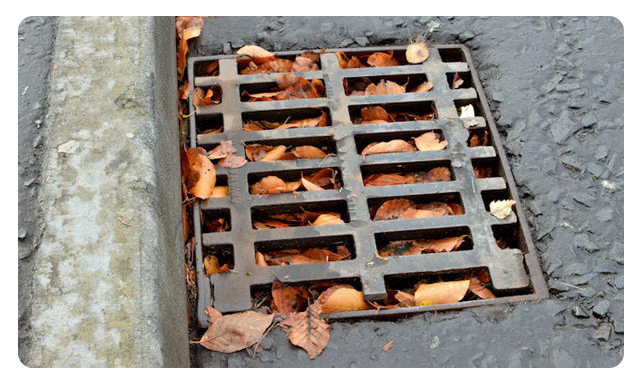Interested in Inspection?
Get Inspection articles, news and videos right in your inbox! Sign up now.
Inspection + Get AlertsFor most of the U.S. and Canada, autumn is marked by falling temperatures, falling rain and falling leaves. For municipalities and sewer inspection crews, these seasonal changes bring new challenges. While stormwater systems are typically prepared for increases in the volume of stormwater, the added leaf litter can aggravate the treatment process, overwhelm systems and exacerbate existing pipeline defects and deterioration.
The main issue with fall foliage in a stormwater sewer system is that leaf litter contributes phosphorus and nitrogen to water. While nutrients like these may sound like a positive addition, in excess they cause what is known as eutrophication, and can also produce harmful algal blooms. Both lead to depleted oxygen content in water, which suffocates aquatic life, and harmful algal blooms produce toxic cyanobacteria, which threatens human and wildlife health. These water quality problems are hazardous and costly to fix, but also preventable.
Bill Selbig of the U.S. Geological Survey published a study that evaluated the impact of leaf litter on nutrient levels in urban stormwater. Selbig observed that keeping nutrient concentrations low by physically removing leaves was especially effective before rainstorms. He found that “27 to 80 percent of initial phosphorus was leachable in the first 24 [hours] of soaking,” meaning preventive measures are highly advisable. Despite the fact that many sewer systems have sumps and screens to prevent debris from polluting stormwater, leaves disintegrate quickly, so these devices are insufficient unless they are equipped with robust filters.
In nature, soil and plants would absorb the extra water and nutrients that autumn brings, but in cities, stormwater systems take it all in. And, as the effluent is rarely treated before being discharged into area waterways, the nutrient content of that effluent can have a major impact on the health of those waterways. Reharvested effluent can be used for irrigation and agricultural applications, toilet flush water, industrial functions and even as a potable water source, making it a valuable resource. Leaf litter jeopardizes the reusability of effluent to further benefit municipalities. Ongoing street and curbside upkeep during autumn months not only improves water quality, but it also has advantages for sewer pipeline systems.
Leaves cause a number of blockages, from storm drain covers to in-pipe obstructions, and the nutrients they add to sewer systems increase the rate of microbial corrosion. These damages wreak havoc on systems and if left untreated can create health hazards. Extensive pipe rehabilitation projects and falling water quality can both be avoided with a focused effort on leaf clean up. With fall in full effect, municipal leaf removal projects should be well underway. Keep sidewalks, curbsides and stormwater drains clear by raking leaves and disposing them in yard waste or compost bins. Fall foliage may be a quintessential part of autumn, but prolonging its time on the ground isn’t worth risking water quality and sewer pipeline systems.
Maintaining safe and effective water systems requires year-round work. For more information about sewer inspection and upkeep, request Envirosight’s free Sewer Maintenance 101 guide.







